This was my favorite board game as a kid. I used to play it for hours on end with my younger brother, who gave me a run for my money more times than I can count. I lost the game in a flood during hurricane Ivan and was unable to find a new copy anywhere. I buckled down and bought the game used from Amazon…something I never do…but gosh darnit, I had to.
Editor’s Note: You can technically play with up to seven players, as there are six Clue pawns. The more people you add however, the easier a time the thief will have in moving around the board as individual players will have to wait longer to react to the thief’s movements.
Clue: The Great Museum Caper is a game where one player takes on the role of the thief while the others take on the role of the detectives. The thief is invisible and tracks his movements via pre-made note sheets, trying to stay hidden from the detectives long enough to accomplish his objectives. In the short game, the thief must steal at least three paintings and find an unlocked exit. In the long game, players take turns being the thief and whoever steals the most paintings wins.
Let’s take a brief look at the components and gameplay before heading into the review.
Components
Board – The playing board contains various colored rooms and hallways that players will be navigating. Around the perimeter of the building are spaces for the lock pieces, more on that in a minute. The board also contains a power room, which the thief can utilize to turn off the power and prevent the detectives from using cameras and motion detectors.
Player Tokens – There are six player tokens, representing the “Clue Crew”, and one gray thief token which is placed on the board when he is revealed.
Dice – The dice are only used by the detectives…one for movement, and one for a random special action.
Paintings – These are placed throughout the museum by the detectives before the game starts.
Locks – Locks, when flipped over, are either labeled “open” or “locked.” They are seeded around the perimeter of the building by detectives before the game begins.
Cameras – These six cameras will aid detectives in locating the thief, however, they are destructible.
Thief Note Sheets – The thief will be using this sheet to track his movements (while being honest about it). This sheet is hidden to the other players.
Setup & Gameplay
Players pick one person to be the thief and the rest take detective tokens, one each. I made it a house rule however that if only one or two detectives are present, that they can control more than one, so as long as they take turns in the proper pawn rotation. The thief gets the barrier and note sheet while the detectives seed the board with paintings, locks, and cameras however they wish.
The Thief:
The thief goes first, moving up to three spaces and marking it on his thief note sheet. Normally, this is done by making a line and drawing a small circle to indicate that you stopped.
The thief can land on cameras, disable them, and mark them off on his sheet. The thief does not remove the disabled cameras immediately, but waits until someone asks about them or when a “Scan” is rolled.
The thief can turn off the power via the power room so that when the detectives use a camera or motion detectors, they won’t work. Again, the thief does not announce that the power is out right away until someone goes to use a camera or motion detector. Detectives must turn the power back on before any electronic devices can be used again.
When stealing a painting, the thief lands on the painting but does not remove it until his next turn so that the detectives don’t know exactly where he is.
When attempting to escape, the thief turns over the lock he is in front of, which alerts players as to where he is. If it is “O” for open, he escapes. If it is “L” for locked, he must find another way out.
The Detectives:
Detectives take turns in between the thief’s turns, for example, player order may go red-thief-blue-thief-green-thief, etc. The detectives roll both dice, one for movement and one for a special action.
The Eye – The eye allows the detective to ask one of two questions:
“Can I See You?” – If the thief is within line of sight, the thief reveals his location via the grey pawn and it stays there until he escapes or is captured.
“Can Camera Number __ See You?” – If the thief is within line of sight of the camera in question, they simply respond with a yes or no. If the thief disconnected that camera previously, he removes it from the board.
Motion Detectors – The thief must reveal what color room he is in. The thief can avoid answering a total of two times and crosses out the wire cutters on his sheet accordingly when he does so.
Scan – The thief must announce if any cameras have been disconnected and if any of them can see him.
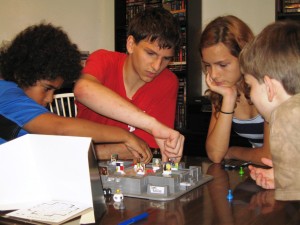
Teamwork is essential in finding the thief. Here, they were planning the board setup and trying to find the most efficient way to slow me down.
Play continues until either the thief escapes or is captured.
The Review
Let me start off by saying that we played three games. Normally we only play one game for review purposes, but the kids enjoyed themselves so much that we played three times. Anthony Jr (16) and Carolyn (13) got to be the thief the second and third time around and I could tell how excited they were when they saw my pawns moving in on them. They both used trickery and often didn’t move their full three spaces, just to throw me off as to their possible location. Vinnie Jr (11) and Devonn (11) both enjoyed the game as well, liking the detective work involved with finding the thief. When I systematically started disabling cameras in the first game and ignored obvious targets, they began five-minute long discussions on where I probably was. It was fun watching them reason things out through logic.
With all of that said, the board is immediately eye-catching, not only due to its color but its 3D design. It’s no Fireball Island, but the board and components are executed well. The board is small enough to where the detectives can move from one end to the other fairly quickly, but open enough to allow a good thief to psych out his opponents without being caught. The thief notepads perform their function well, but if you play this game a lot, save a few so that you can make copies.
If you can get your hands on a copy of this game, then by all means, do so. If you buy it used like I did, make sure that all of the components come with the game. After all of these years, Clue: The Great Museum Caper remains as one of my all time favorite games. It’s easy to learn but difficult to master, making it an excellent game to introduce to kids.
Final Verdict: 10/10
—

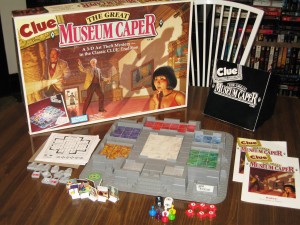
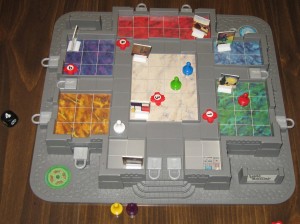
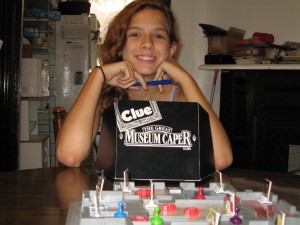
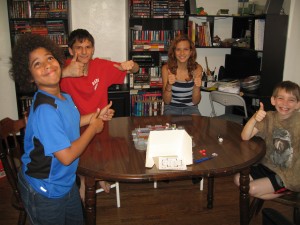
I’m in my 20s and I loved this game as a youngster.